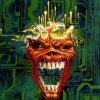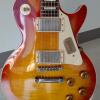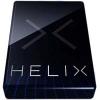Leaderboard
Popular Content
Showing content with the highest reputation on 09/20/2019 in all areas
-
What firmware version did you update from? There was an earlier firmware that re-scaled the mix levels for the five HX reverbs... I believe that happened with 2.60. So if you were at a firmware version earlier than that, yeah, you'll have to adjust the mix levels. This was one of the very rare cases when an update changed the sound of an existing preset.2 points
-
The update to 2.8 has very detailed instructions, and most of what you mention above is not part of those instructions. Backup your Helix with the "matching version of HX Edit". If the system is running 2.51, then HX Edit should be 2.51 Download and install the latest version of HX Edit (2.81... or 2.81.1 if it's an LT) During the Install of HX Edit, when it comes to the part where you can selection options, leave everything selected That step alone will update everything you require... drivers, updater, HX Edit... EVERYTHING. No need to download anything elese Run the current updater and follow the instructions closely. Do not Open HX Edit during the update procedure Don't panic when the Helix tells you something failed and it's entered update mode... just follow the instructions on the computer installer. The above is a stripped down version of the instructions.... I do recommend you read the full instructions, not just what I have written. https://line6.com/support/page/kb/effects-controllers/helix/helixhx-281-release-notes-r920/1 point
-
Each frequency range has it's own Q value. EG: The low Q Value only effects the LOW frequency range, etc... A 10 band is good for tone shaping, but not for the precision of notching. The parametric will be your better choice for that. As you also say... you can use both. First notch (to correct/control) then shape the tone. That is my assumption as well... If that is the case, then my steps should work fine. I hope it all works out for you.1 point
-
I would like to please recommend the ability to save a preset's inactive effect's setting in the HX Edit software and the Helix hardware. I use the HX Stomp, but if implemented in HX Edit and other hardware, it would be useful for all Helix products. I have effect's units that save their settings for inactive effects for each block. This is useful with limited effect's blocks. You can for example, easily swap a Reverb that is active in a block with an inactive delay from the same block. The inactive delay could have saved settings that you previously adjusted. This makes it easy to swap an effect in the same block without having to adjust settings each time. Especially useful for the limit of 6 blocks on the HX Stomp, but useful regardless of how many blocks. Currently, if you swap out your active effect in a block with a new effect, the previous effect's setting reverts to default settings. If you make the previous effect active again in the block, you have to adjust all its setting again. Thanks Line 6! Really enjoying this latest generation of your products!1 point
-
I went ahead and set all the DT Topology settings to the best of my ability for the first 13 presets of Helix 2.81. Would anyone be interested in that backup? Can you even use someone else's backup? I was going to try to put it up for free on the Market, but you have to be a vendor. Then, I was going to put it up in CustomTone, but it looks like you have to go patch by patch. That would take an enormous amount of time. Any suggestions? Can I just upload my .hxb here? Here is the spreadsheet I used to create it. The rig: Line 6 Helix Floor 2.81 DT 50 Head 2015 Les Paul Traditional Pro III Marshall 1922 Cab Line6HelixtoDTConnectivity.pdf1 point
-
Line 6 replied to a PM and said they left DT25 not configured and to figure it out myself. Over £2k spent on JTV '59, Helix and DT25 and to get the tone you have to do the rest yourself. You might as well configure all the effect chain and an amp and then select no cabinet or output and tell the user they have to set the rest up themselves to hear something. The PodHD500 models set the correct topology, the Helix should do the same. I did not sign up to guess what the tone should sound like, it was sold as a tool that would do that job. Step up and fix the DT25 parameters in the patches and defaults for amps please Line 6. Please finish the job and don't leave it half done.1 point
-
Modelling original amplifiers is part of the reason for purchase, flexibility is another. My expectation would be that the base setting for a Vox AC30 model would be correct in the Helix model including the DT25 new parameters Topology III and Class A. If the Pod HD500 has the correct topology in the patches then the Helix should be able to do the same now that the connectivity is there. It just seems to have been missed when releasing 2.8 and 2.81 Has anyone created a list of the models and the correct Topology, Class etc? If not I will give it a go with my HD500 and DT25 and google for anything extra in the Helix.1 point
-
The feature I would like to see is «converting» of Amp+Cab/Amp/Preamp blocks I use the Helix with two DT50 but also direct out or with headphones for practice at home at night. I dial my tones mostly connected to the DT50, where I use preamp-blocks. When I'm satisfied with a preset, I make a copy for direct out/headphones. There I have to replace the preamp-block with an Amp or an Amp+Cab block. Switching the block resets all settings to default. That means, I have to manually write down the settings, change block and apply them again. I like so see the possibility to either a) change the block type between Amp/Preamp with all settings kept, or b) copy only the amp-settings and apply them to preamp-block and vice versa1 point
-
What I do is set up both a volume and a wah in my signal chain, assign them both to the expression pedal built in and use the toe switch to switch between wah and volume. So when I click it my wah activates (with the volume set all the way up) and when I click it again I go back to normal volume control. This works great for me because i never use both the volume pedal and the wah pedal at the same time. Then Im free to only add one expression pedal to the helix since I'm maximizing the built in expression. Although I might add another expression pedal later so that I can control both gain settings and and delay settings live (while still keeping full volume and wah control).1 point
-
From: http://missionengineering.com/ Wiring. Most potentiometers have three connectors; Clockwise, Counter-clockwise, and Wiper. Amazingly, there are multiple different ways these can be wired, all achieving largely the same result, which means yet more variations for expression pedals. The most common expression pedal wiring is to connect the pot to a 1/4″ stereo (TRS) instrument jack as follows: CW —— Sleeve Wiper — Tip CCW —– Ring An alternative is with the tip and the ring reversed as follows: CW —— Sleeve Wiper — Ring CCW —– Tip Yet a third way is as follows: CW —— Sleeve Wiper — Tip CCW —– Tip In this last one, the wiper and CCW are bonded together and connected to the tip and the ring is unused. This requires the use of a mono (TS) cable such as a regular guitar cable, in place of the stereo (TRS) cable used in the other two. These three are the most common that we see in expression pedals, but we keep finding more. Sometimes a dual gang potentiometer is wired in parallel to create a single pot with half the resistance. For example you may see a dual 20K Ohm potentiometer bridged into a single 10K. In this case the pedal will function the same as if it were a native 10K Ohm single pot. ..................................... OK so now we know we can do this: This also alleviated the backwards operation problem and the 0 - 100 - 0 problem... The third way is the Line 6 way. (after some google searches I found this out) which means after the conversion you don't need to use TRS cables anymore you can use TS cables. Also now with either the 12k ohm pot in the one and the 10k ohm pot in the other I get full 0% to 100% on the Helix control. here is what I did to make mine compatible so there would be no need for re configuring. the Potenteiometer on this 1 is 10k Here is before here is after... so just moving 1 wire (the green/ring) and put it together with the (red/Tip) and the (black/sleeve) stays the same. also I jumped out the black on the side pot that is for changing the "throw" of it to disable it and not doing it made it have issues when you adjusted it it would not go back to full throw. (If that makes any scents to you) My other one here is after... so just moving 1 wire (the green/ring) and put it together with the (red/Tip) and the (black/sleeve) stays the same. this model had a duel 24k pot and I soldered each connection 1,2 and 3 to 1,2 and 3 (you see it better in the picture above) making it a single 12k pot This can be done with a soldering iron with no extra solder. just heat up the green wire pull it off and put it on with the red and heat it up to connect it. _________________________________________________________________________________________________________________ I am re-posting this from another thread on the same thing1 point
-
1 point
-
Yes, that's the good news. All you need to do is connect a normal TS cable (normal guitar cord) from the EXP jack on Helix to the OUTPUT of your EB VP Jr. Works like a charm. You're welcome.1 point
-
Very, very easy (I'm an old guy and don't read manuals). 1. You hold down the physical button beneath the parameter you want to control with the pedal - in your example, delay feedback. 2. In the lower right-hand corner of the screen, a prompt comes up that says "Learn Controller". 3. Press the physical button beneath the "Learn Controller" prompt. 4. Now press the expression pedal. Couldn't be easier. For my uses, being able to (easily) assign any parameter to the expression pedal is about the best feature of the Helix.1 point
This leaderboard is set to Indiana - Indianapolis/GMT-04:00




